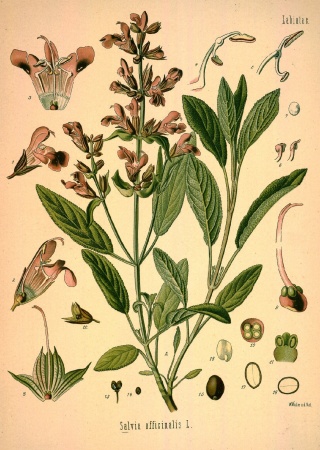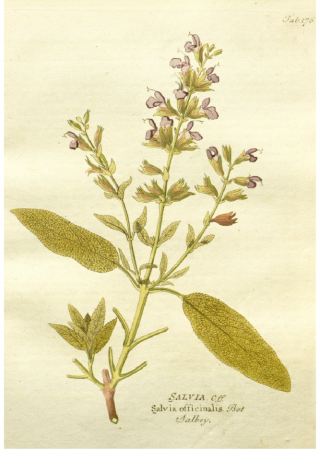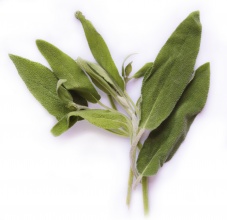Sage
- …the botanical name Salvia officinalis comes from the Latin word salvere, meaning to heal?
- …sage is used to boost the aroma of some wines?
- …sage is an ingredient in the hard cheese "Derby", made in England?
- …sage reduces perspiration and so sage tea makes a pleasant drink on hot days?
- …during the Middle Ages, sage was used as black hair dye?
- …sage is an anti-inflammatory agent, aids digestion and prevents diarrhea?
- …sage reduces lactation, so it is used as an aid in weaning infants?
- …sage as a spice is fresh or dried leaves of the plant Salvia officinalis?
Swiss kabobs
600 g pork meat and liver
20 sage leaves or tips
150 g bacon
pepper, salt
Cut meat and liver into small pieces, pound into cutlets, pepper to taste, lay on sage and wrap in bacon strip. Arrange in baking dish and grill or bake in oven. Salt to taste and serve with baked or roasted potatoes.
During the Middle Ages, sage was considered a cure-all, used by Greeks, Romans and Arabs as a universal tonic and preventative against snake-bite. Roman soldiers and gladiators drank an infusion of sage before battle, to help heal wounds. They believed in it so strongly that drinking this liquid became a regular ritual during periods of rest. From the 13th century we have a poem lauding the ability of sage to prevent death. During the reign of Charlemagne, sage was cultivated in monastic gardens. Only later did it also become a culinary herb.



